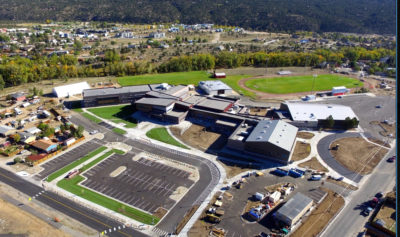Colorado was one of the first states to experience repeated school safety threats and tragedies, beginning with Columbine in April, 1999. The outcome is that our state leads the nation in school safety protocols.
According to news reports, the school in Uvalde, Texas had prepared with its own security plan, including security staff, drills, metal detectors, security cameras, and so on. But how did that really help?
While the government mulls over legislation, there is a palpable feeling of helplessness mixed with a desire for individuals to want to do something. Marian Betz, M.D., MPH, Professor at CU School of Medicine and director of the Firearm Injury Prevention Initiative says there is no one easy fix but that one simple thing gun owners can do is to prevent access.
“The human brain is not finished developing until age 25, so it does not make sense to provide youth 21 and under access to a gun,” she offered.
Garen Wintemute, M.D., M.P.H.,is one of the nation’s leading firearm violence researchers and policy experts. He is the executive director of the UC Davis Health Violence Prevention and Research Program. Wintemute’s years of research point to, rarely discussed but otherwise obvious, causes of gun violence, examining social components that shape the lives of individuals in a community.
His colleague, Amy Barnhorst, M.D., points to the importance of access to safe parks, schools, and healthcare as well as employment opportunities and affordable housing. “These key influencers are often governed by socioeconomic and environmental factors, often more prevalent in marginalized communities where discrimination has taken a toll. Due to a lack of alternatives, these communities often become vulnerable to gun violence.”
She adds that the key to preventing gun violence lies in early intervention, and not waiting until the last minute to pass some legislation.
When a sense of community, of safety, and belonging is lacking, individuals can experience discrimination, bullying, and exclusion. If one looks into the lives of many of these school shooters, there is a history of bullying and disconnect that was so powerful that it simmered dangerously in them. “See something, say something,” has become a mantra for calling attention to individuals who are using threatening language or behavior. But Wintemute’s research points to getting ahead of that.
In Colorado, a lack of affordable housing has been broadening the gap between the haves and have-nots both in urban and rural areas. Jane Jacobs, urban studies activist, reiterated numerous times in her book, “The Life and Death of American Cities,” that when affordable housing is placed in a food desert, detached from public transportation or green spaces, and often in crime-ridden areas, it is not successful. She mentions gentrification as culpable in dispersing populations and erasing previous existing communities.

The new complex for Buena Vista High School and Middle School. Courtesy photo.
A lack of community or connection is related to mental health issues, which cross demographics According to Barnhorst, investing early in people’s lives through basic human equities can add up to violence prevention.
“For example,” she says, “people who have the privilege of growing up in safe spaces with a lack of stress, abuse, and trauma grow up to be emotionally resilient and respond better to crises than individuals on the opposite side of the spectrum.
Wintemute voices optimism about our collective capacity to bring about change. He urges people not to give up hope. In 80 percent of cases, he said, people who commit mass shootings make their intentions known in advance either to family members or friends or via social media. In such cases, there’s always an opportunity to intervene. “We can’t turn away from one another,” he concluded.
The state of Colorado provides an anonymous hotline for individuals to report issues of concern. Buena Vista School Superintendent, Lisa Yates responded to the Uvalde shooting preemptively by writing a letter to her community, detailing the steps the district has put in place for such events and providing counselors the day after.
We can and should continue to train schools to prepare for a shooting. In addition, as a society, we can also work on building community. As suggested by Barnhorst, individuals can support this piece by advocating for affordable housing projects that foster community. The easiest thing, according to Wintemute is to say something when someone is being mistreated or seems to need support.
For further reading visit:
https://scienceofviolence.org/about
https://health.ucdavis.edu/vprp/ourteam/index.html







The police in this incident had similar ‘who’s in charge’ issues as we did in an incident here in Salida that was hopefully dealt with and properly planned for the next time. I hope our local police and school officials were thinking about that incident after this tragedy because it is likely to happen again. I hope that steps have been taken including those that caused our local event to occur in the first place when it was being dealt with peacefully with no threat to anyone until someone got overzealous. I hope that our police force would act rather than consider legal consequences and personal danger a factor in deciding to leave children in harms way. I suspect our local police would go the other direction and harm an innocent person before they would refuse to confront a dangerous person. Without specific rules in place you never know. Maybe only rich white schools in good neighborhoods will get protection because they will sue if they do not. If they are not going to control guns then specific procedures aside from children under desks need to be implemented nationally so that discrimination is not a factor in the decisions of law enforcement.